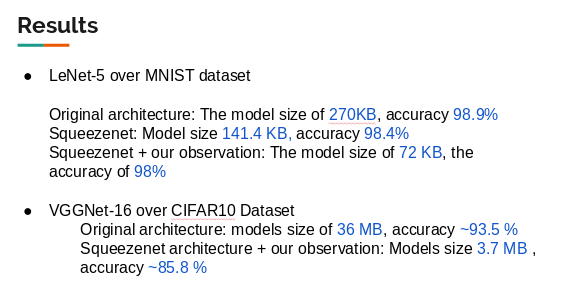Pedestrian detection from aerial view and neural network compression
- Neural Network Compression
- Pedestrian Detection from aerial view
- By making architectural changes eg. SqueezeNet
- By doing compression post training eg. Deep-compression
Observations
- Maxpool over average pool
- Decrease in number of feature maps deep in the architecture
- Number of feature maps per layers depends upon the type of dataset chosen
- Fire models should be implemented later in the network
- Replacing 5x5 with two 3x3 results in slight drop in accuracy
By making architechtural changes in reference to SqueezeNet
We have used stanford drone dataset : http://cvgl.stanford.edu/projects/uav_data/.
- Sampled frames from different scenes in a deterministics approach
- Created subsets of the dataset consisting of ~100, ~1000 and ~2000 video frames
- ~100 image samples: consisting of ~2144 objects in total across all images
- ~1k image samples: consisting of ~15545 objects in total across all images
- ~ 2k image samples: consisting of ~19926 objects in total across all images
- Corresponding test sets also contain the respective number of images






